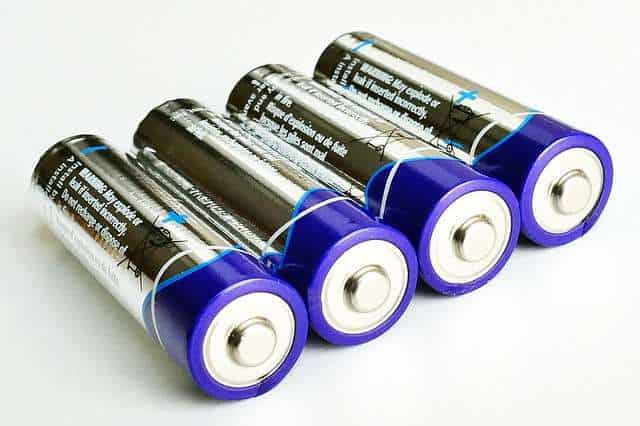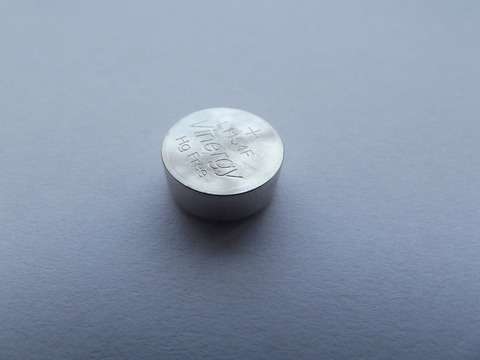Non-rechargeable or single-use batteries are among the most used batteries today. This is probably because they are the best option for common devices used in many homes and offices today. Plus, they are cheap and readily available despite where you are.

If you’re reading this, you probably use non-rechargeable batteries more than rechargeable ones. However, do you understand how they work or the chemistry behind them? If not, don’t worry. Today’s article will discuss all you need to know about different types of non-rechargeable batteries. However, we will mainly focus on AA, AAA, and coin batteries, as they are the most common to fit in battery cases in most electronic devices. So, read on to learn.
Types Of Non-Rechargeable Batteries
There are 5 types of non-rechargeable batteries used today. They include:
- Alkaline and Carbon Zinc batteries.
- Lithium batteries – Not Lithium-Ion
- Mercury batteries
- Silver Oxide batteries
- Zinc-Air batteries
We’ll mostly focus on the Alkaline and Lithium categories since that’s where AA, AAA, and coin batteries fall.
Let’s dive in.
1. AA Batteries
AA batteries are what most people picture when they think of the standard size of non-rechargeable batteries. Depending on the specific device, you can use them as single or multiple cells.
There are two types of AA batteries:
- Alkaline, and
- Lithium
We’ll discuss the different features of each type to help you make a wise decision when shopping for batteries.
Alkaline AA Batteries
Alkaline AA batteries are mainly designed for low-powered consumer devices like wall clocks, cordless phones, non-main accent lighting, TV remotes, small flashlights, and portable audiovisual technologies. For this reason, they are considered the default choice in many homes. So, you can even remove them from one device and use them in another.
These batteries also have a longer shelf life than rechargeable ones, allowing you to buy several pairs for future use. However, if you have backup Alkaline AA batteries lying around the house for some time, ensure you check their condition, as they usually leak over time.
Regular Alkaline AA batteries are not suitable for high-drain devices. Using them in such devices would force you to replace them quite often, which would be expensive. If you have a high-drain device that uses AA batteries, then Procell INTENSE would be a much better choice.
Lithium AA Batteries
Lithium AA batteries are the most preferred type but are usually costly. Unlike Alkaline AA batteries, these are more powerful and don’t leak easily. This makes them a better option if you want a long-lasting battery.
These batteries are a perfect choice for high-drain devices such as digital cameras. However, you could also use them in low-drain gadgets that must be powered for long periods. For instance, you could use Lithium AA batteries in smoke alarms where long-term stability is mandatory and power draw is pretty low.
When used with the right devices, they can last for even nine years. Plus, their long life allows them to stay inside valuable devices for a long period without causing damage.
2. AAA Batteries
This is another common type of battery that is also widely used in in-game controllers, TV remotes, flashlights, radios, and other small devices at home. AAA batteries are usually smaller than AA batteries as a single cell is usually 44.5 mm long with a diameter of 10.5 mm.
There are different types of AAA batteries. Below are the major types that you need to know.
Zinc-Carbon
This type gets its current from the reaction between Manganese Dioxide and Zinc. Zinc -Carbon AAA batteries use Zinc and Carbon electrodes, where the electrolyte is made of Zinc Chloride or Ammonium.
They also have a 1.5 V nominal voltage and low capacities (500-600 mAh). So, they get depleted faster than other AAA batteries, making them suitable for low-drain devices like clocks or TV remotes.
Alkaline
Like Zinc-Carbon batteries, these also use Zinc and Manganese Dioxide chemistry. They use an Alkaline Potassium Hydroxide electrolyte, hence the name “Alkaline.”
Although Alkaline AAA batteries have the same nominal voltage as Zinc-Carbon ones, they have higher capacities (650-1200 mAh). Their high energy density makes them great for alarms, wireless computer mouses, flashlights, and wireless gaming accessories.
Alkaline AAA batteries are also mercury-free and less prone to leaking, which enables them to last longer.
Lithium Iron Disulfide
Lithium Iron Disulfide AAA batteries use a Lithium/Iron Disulfide chemistry. This means they have an Iron Disulfide cathode, a lithium anode, and a lithium salt electrolyte.
These batteries offer a (1.5 V) nominal voltage (up to 1.8 V maximum open-circuit voltage) with a capacity of approximately 1,200 mAh. Therefore, they are suitable for high-drain devices like cameras and high-power lighting. Additionally, they have a very long lifespan of nine years or more, making them a perfect choice for GPS units, high-power LED lighting, motorized toys, and standby devices.
You should note that Lithium Iron Disulfide AAA batteries are usually more expensive than Alkaline batteries.
Nickel Oxyhydroxide
Nickel Oxyhydroxide AAA batteries (NiOx) use both Manganese Dioxide and Nickel Oxyhydroxide as the electrolyte. This type provides a higher nominal voltage of 1.7 V and has high energy densities, making it great for high-drain devices like digital cameras.
3. Coin Batteries

Coin batteries are usually flat and cylindrical. They are mostly used in small, low-power devices like wristwatches or wearable tech. Typically, these batteries are made for devices that need to draw a small current over a long period. A good example is the CR2032, the coin battery on a PC/laptop motherboard. It uses Lithium Manganese Dioxide chemistry, which provides a 3V voltage.
Conclusion
Big and small batteries have evolved over the years, with new inventions gaining much popularity today. Hopefully, more technologies will continue emerging to enable batteries to provide more power and last longer. Lastly, we hope today’s post has taught you a few unique things that you didn’t know about non-rechargeable (AA, AAA, and coin) batteries.





